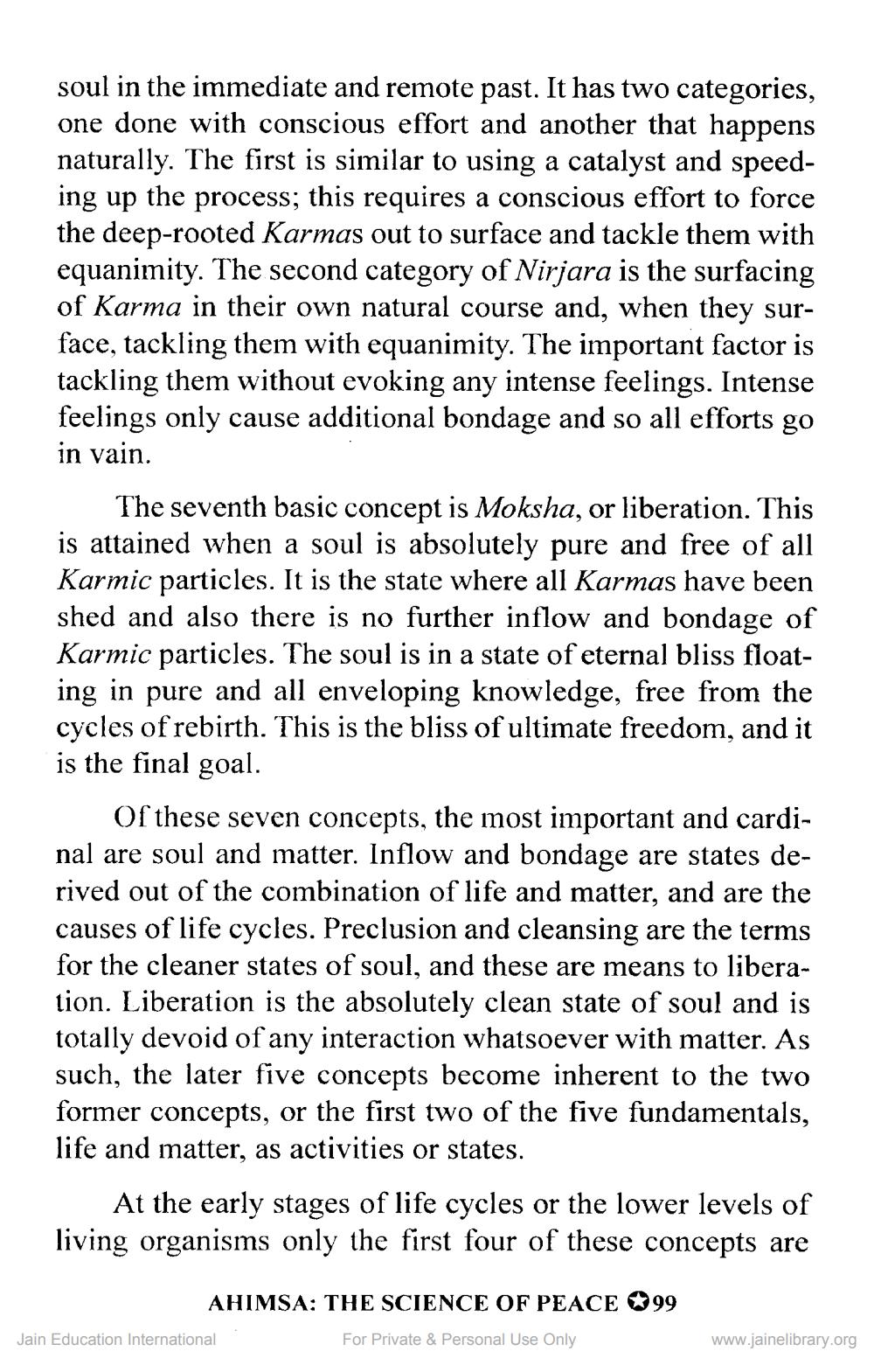________________
soul in the immediate and remote past. It has two categories, one done with conscious effort and another that happens naturally. The first is similar to using a catalyst and speeding up the process; this requires a conscious effort to force the deep-rooted Karmas out to surface and tackle them with equanimity. The second category of Nirjara is the surfacing of Karma in their own natural course and, when they surface, tackling them with equanimity. The important factor is tackling them without evoking any intense feelings. Intense feelings only cause additional bondage and so all efforts go in vain.
The seventh basic concept is Moksha, or liberation. This is attained when a soul is absolutely pure and free of all Karmic particles. It is the state where all Karmas have been shed and also there is no further inflow and bondage of Karmic particles. The soul is in a state of eternal bliss floating in pure and all enveloping knowledge, free from the cycles of rebirth. This is the bliss of ultimate freedom, and it is the final goal.
Of these seven concepts, the most important and cardinal are soul and matter. Inflow and bondage are states derived out of the combination of life and matter, and are the causes of life cycles. Preclusion and cleansing are the terms for the cleaner states of soul, and these are means to liberation. Liberation is the absolutely clean state of soul and is totally devoid of any interaction whatsoever with matter. As such, the later five concepts become inherent to the two former concepts, or the first two of the five fundamentals, life and matter, as activities or states.
At the early stages of life cycles or the lower levels of living organisms only the first four of these concepts are
AHIMSA: THE SCIENCE OF PEACE 99 Jain Education International
For Private & Personal Use Only
www.jainelibrary.org




